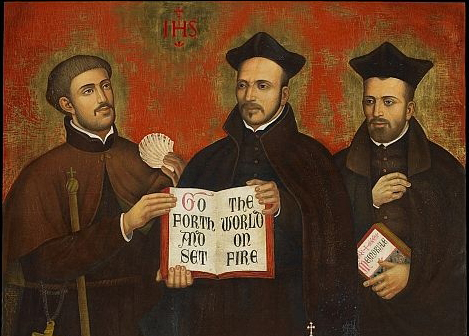A few months after his election, on October 9, 2013, Pope Francis declared Italian mystic Angela of Foligno (1248–1309) a saint, without further ado. No date for the canonization Mass, no formula in Latin; the Franciscan nun officially joined the procession of saints by simple decree.
Recognizing popular devotion
In the Catholic Church, it takes a long time to be included in the catalog of saints. Countless cases have gotten bogged down along the way. However, this rather unusual form of canonization used for St. Angela does exist. Pontiffs use it in particular to confirm the holiness of people who already enjoy a reputation for holiness, and who have been the object of devotion dating back to ancient times – several centuries.
In other words, they have long been considered “saints” by the vox populi, the voice of the people, but their canonization file has been lost in the twists and turns of history. This is the exceptional process of so-called “equipollent” canonization.
This rapid procedure dispenses with the recognition of a miracle attributed to the intercession of the person in question. Since they already enjoy an uninterrupted devotion and a reputation for miracles, the pope immediately recognizes the pre-existing devotion to the saint and dispenses with the formal celebration.
Benedict XVI used the same recognition forSt. Hildegard of Bingen, who is also recognized as a doctor of the Church.
Here’s an overview of the normal process.
A few examples
Over the years, the Argentine pontiff has carried out other equipollent canonizations. On December 17, 2013, he included in the catalog of saints the French Jesuit priest Pierre Favre (1506-1546). He was a companion of St. Ignatius of Loyola who participated in the founding of the Society of Jesus. This decision, promulgated on the birthday of Jorge Mario Bergoglio, was interpreted as a sign of the pope’s personal devotion to the saint — himself a Jesuit.

The following April, he pronounced three equipollent canonizations at the same time, those of Joseph de Anchieta (1534-1597), Spanish Jesuit priest missionary to Brazil, François de Laval (1623-1708), French missionary who was the first bishop of Quebec in Canada, and Marie of the Incarnation (1599-1672), French Ursuline nun, also missionary in North America.
On July 5, 2019, it was the turn of a 16th-century Portuguese man, Bartholomew of the Martyrs (1514-1590), archbishop of Braga, to find himself propelled among the ranks of saints by the signing of a decree.
In 2021 again, on April 24, the Pope recognized the sainthood of an Italian Dominican woman from the Middle Ages, Margaret of Castello (1287-1320), in an equipollent way.

Next up: a group of nuns?
According to custom, these particular canonizations are requested directly by a broad representation of the Church – a community, a diocese, etc.
A group of French women could also be part of an upcoming equipollent canonization: the 16 Carmelites of Compiègne, guillotined on July 17, 1794, during the French Revolution. They are known throughout the world thanks to the famous Dialogues that Bernanos dedicated to them. In fact, Pope Francis gave authorization to submit this file to the Congregation for the Causes of Saints on January 20, 2022.



